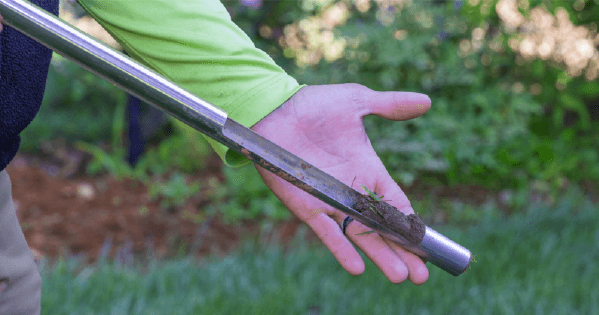Georgia Garden Pests
The following is a visual guide of common Georgia garden pests by the lawn and garden professionals at Simply Green Lawn Care Plus. This guide provides names and descriptions the pests as well as methods of controlling them.
Though some of these garden pests can be managed through DIY practices, late-stage infestations and certain pests should be addressed with a professional plant healthcare service.

APHIDS
Aphids can be green, yellow, black, red, brown, or gray and grow to about ¼ inch long. If the leaves of your garden plants look wilted or curled, or the new leaves look distorted, then you likely have an aphid infestation. Click here to read more.

SLUGS AND SNAILS
Slugs and snails enjoy eating tender plant leaves making odd-shaped, ragged holes in them as they go. They are prone to low-lying plants such as strawberries and purple hearts. To deter slugs and snails, remove damp hiding places in the undergrowth of your garden. Click here to learn more.

CATERPILLARS
Caterpillars leave holes, excrement, webbed or rolled leaves, and eggs behind as evidence they are causing a problem for your plants. Picking them out of your garden and placing them in soapy water is an effective and organic way of managing caterpillars. Click here to read more.

WHITEFLIES
Whiteflies can infest a garden quickly in warm weather. They use their needle-like noses to poke holes in the phloem, the pathway inside the stems that feeds the entire plant. After sucking the plants dry, leaves turn yellow or dry out and fall off, and they may be covered with a black, sooty or sticky residue. The top strategy for controlling whiteflies is prevention by introducing natural predators such as lacewings and small ladybeetles. Click here to learn more.

JAPANESE BEETLES
Japanese Beetles are about a ½ inch long with blue and green metallic heads and brownish bodies. They feed on the upper leaf surface chewing holes throughout the lush, green growth. Although the damage they cause is not deadly to the plant, their feeding pattern leaves behind a lacy appearance, which makes the plant look unhealthy. Click here to read more.

SPIDER MITES
Spider mites get their name from the silky, spider-like web they weave. They damage plants by sucking the nutrients from healthy plant cells. Spider mites are nearly microscopic so it’s best to use a magnifying glass when inspecting plants. Evidence of spider mite damage are light dots on the leaves or leaves may turn bronze. Heavily damaged leaves will turn yellow and fall off the plant. Click here to read more.

SCALE INSECTS
Scale insects are related to whiteflies and aphids but have protective waxy or shell-like bumps or scales to cover them. These insects feed on sap, extracting fluids from plant tissues, thereby causing leaves to yellow or drop. In severe cases, an entire plant will die. To control scale insect populations, physically remove the scales using a soft brush or scrape them off with your fingernail. Pruning to limit branches is also effective. Click here to read more.

THRIPS
These tiny—1 to 2 millimeters in length— feed on sap, leaving behind silver or bronze streaks on foliage. They have brown, black or yellow slender bodies with long, narrow wings that are fringed with hairs. Cultural control methods include removing and destroying infested leaves and flowers. Prune affected plants to allow air and light to penetrate the environment, which thrips do not like. Click here to read more.
If you're battling some of the pest mentioned above, or have noticed a decline in the health of your lawn, contact Simply Green Lawn Care to see if one of our lawn and yard experts can help. Either click here to contact us, or complete the estimate form below to get started!

